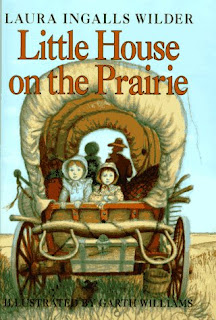
I have been to the Grand Canyon twice and will be returning for my third visit this August. The first time I gazed at the canyon I was fifteen-years-old. And as discussed in "The Loss of the Creature," I felt like I was looking at a postcard. I don't have any pictures from that time, but I remember that it was cold, and I remember that it felt appropriate to be arriving there in a red convertible. Watching the sun rays bounce off the walls, I knew that I might as well be staring at eternity. We were only there for two hours, but I knew that I would be back.
The summer after my senior year I went to Las Vegas on a mission trip. My boyfriend who has now been my husband of two years came, too. Although this side trip to the Grand Canyon was also brief, it was completely different. I was no longer looking at the canyon as a stranger. I was one of the only ones in my group who had seen it before and that made me feel like I had some type of privilege that they didn't. I dangled my feet one at a time over the edge. I jumped in Logan's arms for a picture. I walked off the beaten path with my friends, but I refused to leap from the rock formations like some of the guys did. I wasn't completely oblivious to the dangerous openness.
When I read this chapter from The Message in the Bottle I first thought that I managed to have a genuine experience like Cardenas, yet I realized that I couldn't help compare the actual canyon and all its splendor to not only my created expectations of it but of my own memories. While I strayed off of the beaten path, I was not conscious of what I was doing and, therefore, could not fully experience it. When I go back this August, I am going to try to be the complex tourist who sees the canyon through others' generic experience, even though I think that sounds terrible. I am going to read the canyon rhetorically and try to look at it any way other than straight on.
While reading this passage I could not help but think about the new assignment that is going to be implemented in our comp classes next year, the one about the rhetorical analysis of an object. I think this would be a great article for the students to read when thinking about this project. So often we think we see things for how they are, but we really see a shadow of their true selves. By approaching an object from a new perspective, the students could actually learn to see something for the first time.
I was thinking about the example of the family who gets trapped at the Grand Canyon all by themselves and how they can have a legitimate experience. When I was in the first grade we had to put on a school play. A couple of my friends and I arrived early and had a little while to explore around the school (of course we were not supposed to). Those dark hallways and empty classrooms seemed nothing like our school, but when I think about my elementary school, I often recall those images. It was probably the only time I really saw the place where I spent six years of my childhood.
The next time I teach, I think I will try the experiment suggested at the end of the chapter, which is to give your students something "out-of-place" to learn, such as poetry in a biology class. To be given something unexpected will encourage the students to see something in a unique way. I think this "out-of-placeness" could be incorporated in the object rhetorical analysis project is some way.
I am excited about seeing the Grand Canyon for the third time...or first time, depending on how one looks at it.


